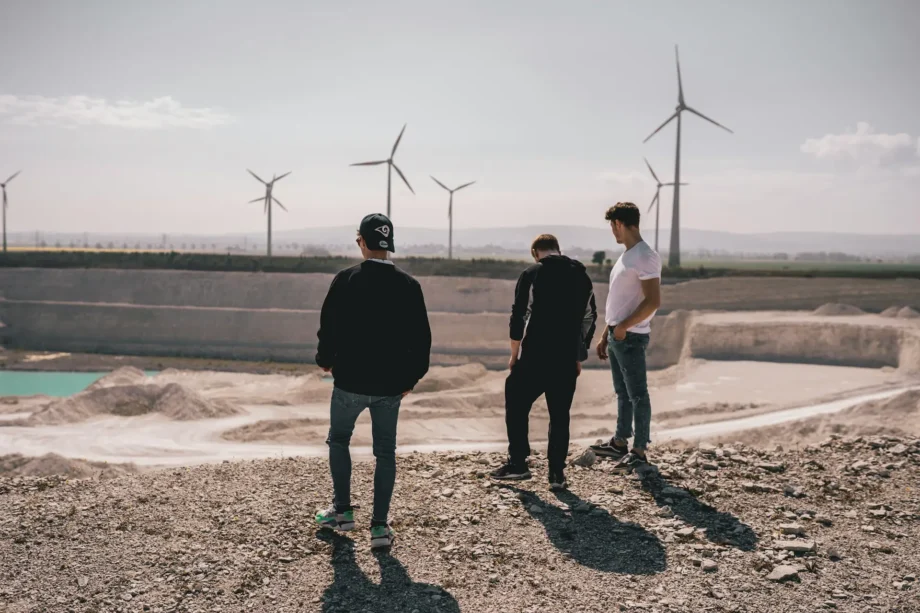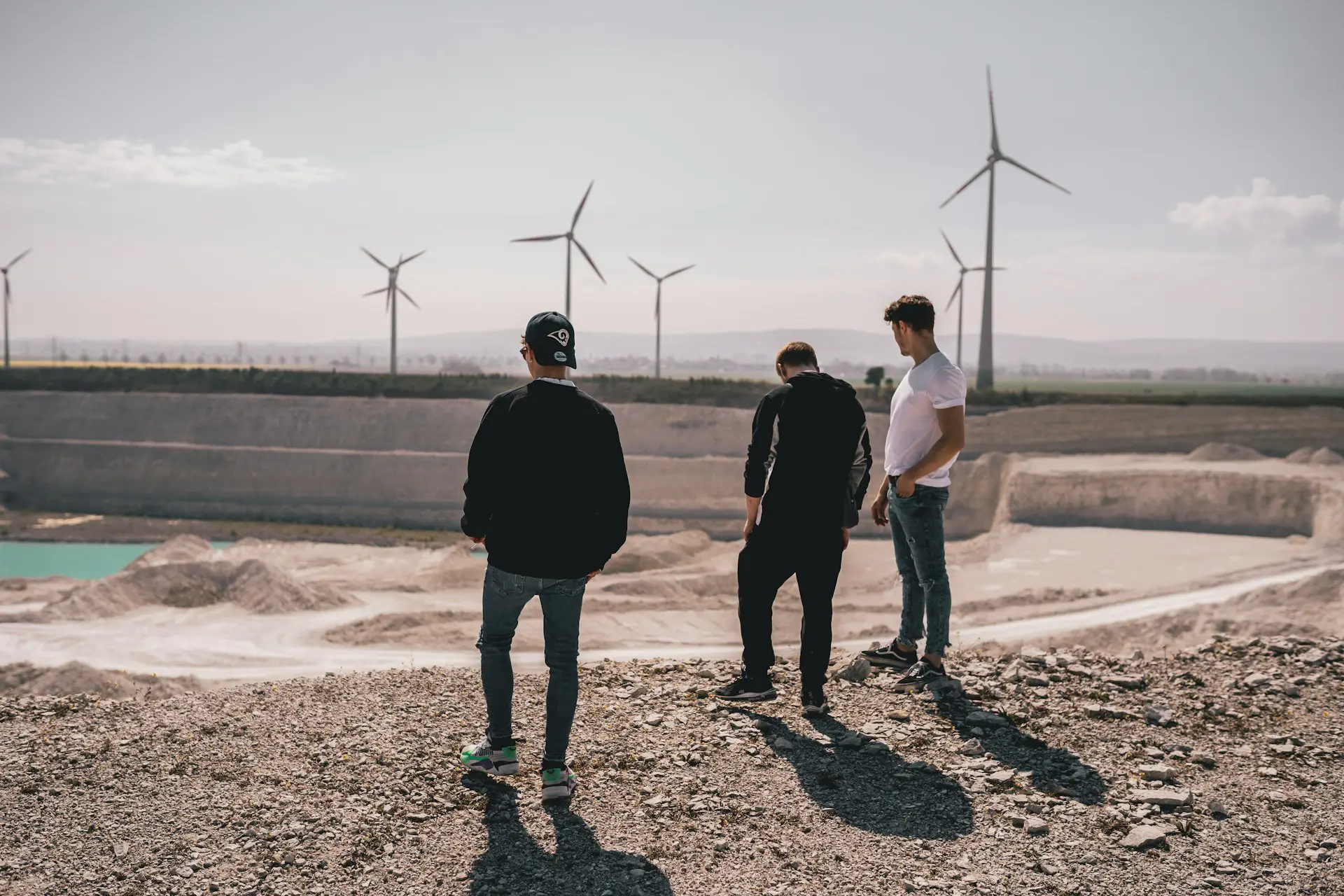The most significant drawback of wind farms is their visual impact, as several research findings indicate that people’s aesthetic experience of the natural landscape is a major barrier to accepting wind turbines widely. It is emphasized that minimizing the visual impact is crucial for enhancing the social acceptance of renewable energy. Numerous studies also suggest that wind farms negatively affect the quality of the natural landscape for nature-based tourism. Consequently, conflicts between wind power development and nature-based tourism, which generally rely on the naturalness of the landscape, are likely to occur.
While there is extensive literature on how residents perceive wind power developments and how wind turbines impact tourism, limited research compares the perceptions of these two groups.
Additionally, an examination of potential statistical differences between these two groups is conducted in the Energy for Sustainable Development journal (Volume 54, 2020, Pages 127–138). The study focuses on their:
- General attitudes towards renewable energy sources.
- Views on wind farms and wind turbines in the Icelandic landscape.
- Perceptions of the landscape surrounding the proposed wind farm and their landscape preferences.
This research builds upon two broader studies centered on the perceptions of tourists (Sæþórsdóttir et al., 2017) and residents (Ólafsdóttir & Sæþórsdóttir, 2019) regarding the proposed Búrfell Wind Farm (BWF). Understanding the perspectives of these stakeholder groups is crucial for areas heavily reliant on nature as a tourist attraction. The voices of both local residents, who wield political power through voting in municipal elections, and tourists, vital for Iceland’s tourism-driven economy, play a significant role. Recognition of their opinions is especially crucial for decisions related to building permits for a wind farm.
This study contributes to the broader research on key issues and debates in energy policy and the transition towards sustainability. By comparing the reactions of tourists and residents to changes in the natural landscape resulting from wind farm development, it sheds light on the trade-offs between the necessity to generate renewable energy and the preservation of landscape quality. The competitiveness of nature tourist destinations in the global-local context and the balancing act between losses and benefits, both globally and locally, are also addressed.
Perception and Construction of Natural Landscapes: Aesthetic Subjectivity and Social Influences.
Perception of the natural landscape and the construction of places are deeply influenced by aesthetic satisfaction and individual perspectives on visual landscape quality (Wang, Zhao, & Liu, 2016). The complex psychological process through which people perceive and understand their environment involves various senses, with visual perception playing a dominant role, as emphasized by Urry (2002). This visual perception is shaped by both the physical attributes of the landscape and the intricate interplay between the physical environment and the mental landscape (Bourassa, 1990, 1991).
Consequently, the subjective nature of aesthetic landscape quality becomes evident, with the adage that “beauty is in the eye of the beholder” (Daniel, 2001; Lothian, 1999; Tveit, 2009). Individuals may observe the same landscape and interpret it differently based on their unique sensory experiences, prior knowledge, and attitudes. The selection of sensory information from the landscape is influenced by an individual’s perceptions, creating a personalized understanding of the environment (C. M. Hall & Page, 2002).
Furthermore, the comprehension of the environment is not a passive reflection of reality but a product of social systems. Tourists, for instance, often perceive landscapes in alignment with their pre-existing views and the mental image shaped by sources such as social media, the tourism industry, and tourism organizations.
When an area is designated as a wilderness, people may consciously or unconsciously disregard artificial alterations to the landscape, constructing their own perceived reality (Sæþórsdóttir & Saarinen, 2016). Hence, whether an area is perceived as a wilderness or not is contingent upon individual interpretations and the influence of external factors.
Exploring the Human-Place Connection: Insights from Concepts of Place Meaning, Place Identity, and Place Attachment
Various ideas have been utilized to investigate the relationship between individuals and locations. Geographers such as Relph (1976) and Tuan (1980) have delved into the emotional bond people form with the physical environment by ascribing meanings to places. This connection has also been explored through the perspective of ‘place identity,’ elucidating how specific locations and their natural or symbolic attributes influence individuals’ sense of identity (Proshansky, Fabian, & Kaminoff, 1983).
Additionally, the concept of ‘place attachment’ (Low & Altman, 1992) has been employed, indicating that residents, who often have more extensive experiences and deeper knowledge of their surroundings due to frequent and prolonged use, tend to develop stronger emotional ties to the area compared to tourists.
Moreover, residents may exhibit a keen interest in safeguarding locations from proposed environmental alterations, a factor that not only provides them with considerable satisfaction but also holds significance for their identity. Consequently, their perspective on changes in the natural landscape might lean towards the negative, particularly when compared to tourists who typically possess a less strong connection to the place.
Nevertheless, attitudes can also be influenced by economic considerations; for instance, residents might be willing to compromise on the quality of the natural landscape if they anticipate economic benefits.
Research by Vorkinn and Riese (2001) indicates a correlation between the intensity of a local resident’s opposition to a power plant project and their level of place attachment. This suggests that the construction of a power plant could potentially diminish the attachment residents feel towards their locality.
Crete: Tha Case or Renewables
Hydropower plant and solar panels infrastructure generally do not disrupt the experience of most tourists in the northwestern part of Crete, except for concerns related to transmission lines.
This illustrates that public endorsement of renewable energy development is, indeed, socially constructed based on individual perceptions of the landscape. Individuals who view an area as a wilderness often appear less inclined to support renewable energy production, whereas those who perceive the landscape as a cultural entity tend to support its utilization for energy production.
As wind turbines are prominent and large structures, they exert a significant impact on the landscape. Numerous studies suggest that the primary cause of opposition to wind farms is individuals’ apprehension that the natural landscape’s quality will decline.
Understanding Local Resistance to Wind Farms: The ‘Not in My Backyard’ Syndrome.
Opposition to the establishment of wind farms among residents is frequently labelled as the ‘not in my backyard’ (NIMBY) syndrome, wherein individuals express support for developments like renewable energy production but oppose them when proposed in their neighbourhood. Criticism of the NIMBY approach highlights that local opposition can be attributed to various factors, including genuine concerns about the local ecosystem and perceptions of fairness.
Additionally, it is observed in various studies that when local groups express dissatisfaction with wind farm projects, their objections often revolve around the administrative aspects, whether from a policy-making perspective or in relation to the actions of developers. Furthermore, research indicates that the social acceptance of proposed wind energy projects tends to rise when the entire community experiences economic benefits from the energy production.








